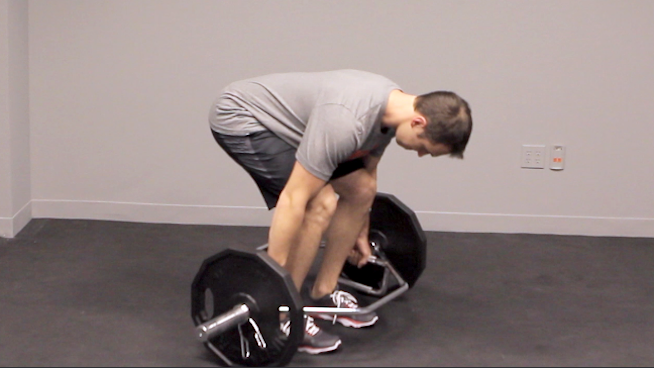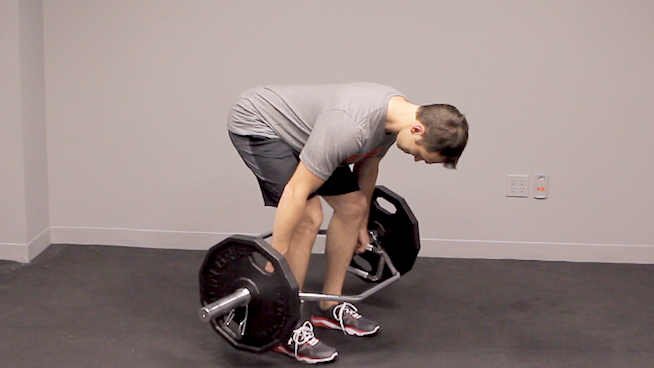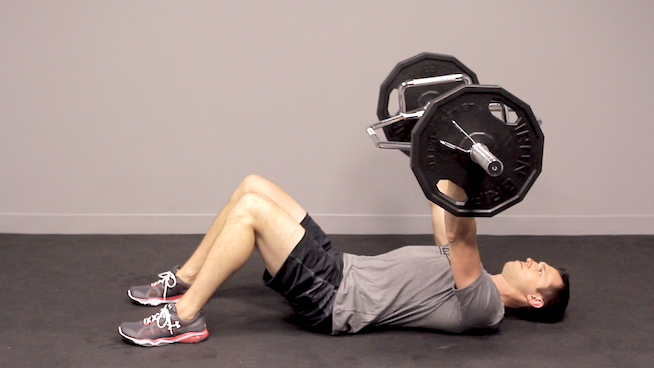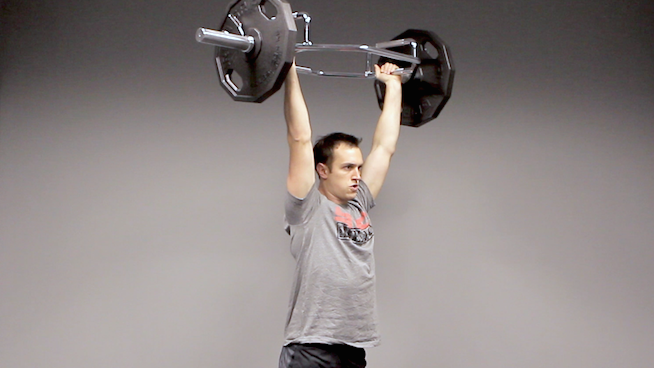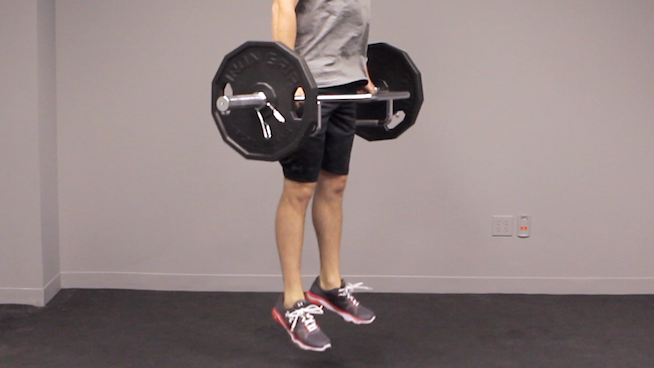7 Trap Bar Exercises You Should Try
For the uninitiated, trap bars look completely crazy. I recall the first time I saw a trap bar when I was in high school. I couldn’t figure out its purpose or how even to begin to use it.
But trap bars have become more popular—especially since the Trap Bar Deadlift is recommended more frequently by experts. This is how you see it used most often in weight rooms.
However, the trap bar is suitable for more than deadlifting. Like other pieces of equipment, it has many uses. And exercise variations using it can make your workouts better than ever.
1. Trap Bar Deadlift
We’ll get started with the fundamental trap bar exercise—the Trap Bar Deadlift. It’s easier to perform than the traditional Deadlift, because you stand in the middle of the weight rather than holding the load in front of your body.
“It’s much easier to coach a beginner with the Trap Bar Deadlift because it grooves the hinge pattern and it’s friendlier on the back,” explains Alex Rosencutter, owner of Rosencutter Ultra Fitness and Performance (Wauwatosa, Wisconsin). This makes the Trap Bar Deadlift one of the best all-round exercises to increase hip strength, while also developing a strong back, traps and grip.
There are a few variations of the Trap Bar Deadlift. Rosencutter recommends Block Trap Bar Deadlifts, which are performed by placing deadlift mats or boxes under the plates to raise the height of the bar, shortening the range of motion. This makes it easier for tall athletes who have limited hip mobility, and it allows you to use a heavier weight. Also, you can stand on a small box to perform Deficit Trap Bar Deadlifts, which increase the difficult by forcing you to work through a greater range of motion.
2. Trap Bar RDL
The Barbell RDL is a fantastic exercise for developing glute and hamstring strength, and it’s one of my personal favorites. However, you need strict form. Dr. John Rusin, a strength coach and physical therapist, says that if they are performed incorrectly, traditional RDLs may cause lower-back pain and injury, because the weight is in front of your body. That’s where the Trap Bar RDL comes into play.
“With the necessary muscle-building loads remaining near maximal, and the negative lumbar shear forces reduced, the trap bar once again provides the best of both worlds,” asserts Rusin. You still get the benefits of the barbell RDL, but with less risk of injury.
3. Trap Bar Floor Press
Lying on the floor during a press takes your legs out of the movement, forcing your upper body to do all the work—and blasting your chest. With a trap bar, you can use a neutral grip, which according to Rusin, puts less stress on your shoulders than the barbell version. This is particularly valuable if your shoulders are finicky when benching or if you’re an overhead athlete concerned about putting too much wear and tear on your shoulder joints.
4. Trap Bar Overhead Press
Using a trap bar for an Overhead Press offers benefits similar to the Trap Bar Floor Press. You’re able to perform heavy overhead presses using a neutral grip, building upper-body strength without placing too much stress on your shoulders.
5. Trap Bar Push-Ups
A trap bar has 6-inch handles, which allow athletes above 6-foot-2 inches to perform Deadlifts without compromising their form. The handles can also be used for Push-Ups.
“The trap bar gives you a way to add depth to your Push-Up while also widening your grip, placing more emphasis on your pec muscles rather than your triceps,” explains Ryan Sprague, owner of TRAIN Sports and Fitness (San Diego). To further increase the difficult, place a plate on your back or use chains.
6. Trap Bar Squat Jumps
“Placing a loaded barbell on your back and jumping isn’t always the best idea as it places excess stress on the lumbar spine,” explains Sprague. “It also often recruits the quadriceps rather than the glutes and hamstrings.”
To safely get the power-building benefits of this move, Sprague advises performing the trap bar variation, which shifts the weight load off your back. He says, “Using a trap bar provides a safer option by taking pressure off the lower back and placing the load in a position that better recruits the glutes and hamstrings for jumping.”
7. Trap Bar Farmer’s Walks
Farmer’s Walks are one of the best exercises for building grip, core, glute and hamstring strength. And they are simple: you walk carrying heavy weight. If you want to load up on weight, you need Farmer’s Walk handles, but you won’t find them in most gyms. Instead, Sprague recommends using a Trap Bar.
Josh Williams, a strength coach at Spurling Training Systems (Kennebunk, Maine), agrees that the trap bar is a great tool for Farmer’s Walks. “It develops grip strength, upper-back strength, leg strength and grooves your Deadlift pattern,” he says. “Let’s not forget it gets your heart rate up quickly.”
READ: Why Every Athlete Should Do Farmer’s Walks
RECOMMENDED FOR YOU
7 Trap Bar Exercises You Should Try
For the uninitiated, trap bars look completely crazy. I recall the first time I saw a trap bar when I was in high school. I couldn’t figure out its purpose or how even to begin to use it.
But trap bars have become more popular—especially since the Trap Bar Deadlift is recommended more frequently by experts. This is how you see it used most often in weight rooms.
However, the trap bar is suitable for more than deadlifting. Like other pieces of equipment, it has many uses. And exercise variations using it can make your workouts better than ever.
1. Trap Bar Deadlift
We’ll get started with the fundamental trap bar exercise—the Trap Bar Deadlift. It’s easier to perform than the traditional Deadlift, because you stand in the middle of the weight rather than holding the load in front of your body.
“It’s much easier to coach a beginner with the Trap Bar Deadlift because it grooves the hinge pattern and it’s friendlier on the back,” explains Alex Rosencutter, owner of Rosencutter Ultra Fitness and Performance (Wauwatosa, Wisconsin). This makes the Trap Bar Deadlift one of the best all-round exercises to increase hip strength, while also developing a strong back, traps and grip.
There are a few variations of the Trap Bar Deadlift. Rosencutter recommends Block Trap Bar Deadlifts, which are performed by placing deadlift mats or boxes under the plates to raise the height of the bar, shortening the range of motion. This makes it easier for tall athletes who have limited hip mobility, and it allows you to use a heavier weight. Also, you can stand on a small box to perform Deficit Trap Bar Deadlifts, which increase the difficult by forcing you to work through a greater range of motion.
2. Trap Bar RDL
The Barbell RDL is a fantastic exercise for developing glute and hamstring strength, and it’s one of my personal favorites. However, you need strict form. Dr. John Rusin, a strength coach and physical therapist, says that if they are performed incorrectly, traditional RDLs may cause lower-back pain and injury, because the weight is in front of your body. That’s where the Trap Bar RDL comes into play.
“With the necessary muscle-building loads remaining near maximal, and the negative lumbar shear forces reduced, the trap bar once again provides the best of both worlds,” asserts Rusin. You still get the benefits of the barbell RDL, but with less risk of injury.
3. Trap Bar Floor Press
Lying on the floor during a press takes your legs out of the movement, forcing your upper body to do all the work—and blasting your chest. With a trap bar, you can use a neutral grip, which according to Rusin, puts less stress on your shoulders than the barbell version. This is particularly valuable if your shoulders are finicky when benching or if you’re an overhead athlete concerned about putting too much wear and tear on your shoulder joints.
4. Trap Bar Overhead Press
Using a trap bar for an Overhead Press offers benefits similar to the Trap Bar Floor Press. You’re able to perform heavy overhead presses using a neutral grip, building upper-body strength without placing too much stress on your shoulders.
5. Trap Bar Push-Ups
A trap bar has 6-inch handles, which allow athletes above 6-foot-2 inches to perform Deadlifts without compromising their form. The handles can also be used for Push-Ups.
“The trap bar gives you a way to add depth to your Push-Up while also widening your grip, placing more emphasis on your pec muscles rather than your triceps,” explains Ryan Sprague, owner of TRAIN Sports and Fitness (San Diego). To further increase the difficult, place a plate on your back or use chains.
6. Trap Bar Squat Jumps
“Placing a loaded barbell on your back and jumping isn’t always the best idea as it places excess stress on the lumbar spine,” explains Sprague. “It also often recruits the quadriceps rather than the glutes and hamstrings.”
To safely get the power-building benefits of this move, Sprague advises performing the trap bar variation, which shifts the weight load off your back. He says, “Using a trap bar provides a safer option by taking pressure off the lower back and placing the load in a position that better recruits the glutes and hamstrings for jumping.”
7. Trap Bar Farmer’s Walks
Farmer’s Walks are one of the best exercises for building grip, core, glute and hamstring strength. And they are simple: you walk carrying heavy weight. If you want to load up on weight, you need Farmer’s Walk handles, but you won’t find them in most gyms. Instead, Sprague recommends using a Trap Bar.
Josh Williams, a strength coach at Spurling Training Systems (Kennebunk, Maine), agrees that the trap bar is a great tool for Farmer’s Walks. “It develops grip strength, upper-back strength, leg strength and grooves your Deadlift pattern,” he says. “Let’s not forget it gets your heart rate up quickly.”
READ: Why Every Athlete Should Do Farmer’s Walks

